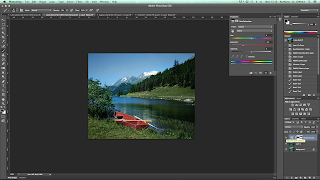When going through a brief, you have to avoid certain words, a few examples of ‘good-bad-words’ are
- Connects
- Metaphorical Journey
- Broadcast
- Fascinating
- Phoney
- Interesting
5 Problems you want to solve & why?
- To communicate the imbalance through type
- The brief is extremely broad, I need to refine it so I can progress to delivering an outcome
- The brief says imbalance is bad, but it also says that I can interpret it as good - I need to solve this so I can create an outcome
- It says current affairs, when Imbalance throughout society has been happening for centuries, I need to find out if it’s worth talking about it through history
- It doesn’t specify the audience, I need it so I know who to design for
- Doesn’t specify the delivery method, so I don’t know what do design
- There’s an imbalance in the ay we live
- Imbalance can relate to injustice
- The brief is pushing for equality rather than inequality
- It’s quite boring and obvious
- There is no defined audience
- People who are interested in current affairs across the media
- Audience open for interpretation
- Political Fanatics
- Late teens and up, typically average intelligence
- Charitable activists interested in equality
- There’s imbalance in various areas of life
- What these imbalances are
- Why there are important
- Who is affected
- Propose how it could be rectified
- I don’t know the statistics involved in this subject
- I don’t know the specific audience
- I don’t know the method of delivery
- I don’t know how to appeal to the audience
- I don’t know which media would be appropriate
- I don’t know what would be deemed feasible by publishers/broadcasters
- I don’t know if the brief wants me to communicate things positively or negatively.
5 Problems you want to solve & why?
- Create a concept or interior and exterior branding for the typographic themed restaurant ‘Mutton Quad’, as it says so in the brief
- How deep does the branding need to go? Does it need a few logos dotted on items, or do we need the branding elegantly engraved into the silverware?
- What is the target audience of the restaurant? Who does it cater to? What style of food/serving is it?
- What’s the budget of the project? How much money is there to spend, how extravagant can I make the designs?
- How could it be promoted?
- Branding for a restaurant
- It has to be typographic themed
- We can travel the world of eating 24 hours a day
- The type of restaurant offers the appropriate environment , food, and drinks that will make the occasion successful.
- There’s no specific defined audience
- People who’re interested in type
- People who’re interested in food
- 16+, as those younger can’t really afford to eat out, of course, there are exceptions
- Unisex
- I want to communicate the typo graphicness of the restaurant
- I want to communicate the quality of food in the restaurant
- I want to communicate that’s it’s actually a restaurant, and not a type-class
- I want to communicate the price range
- I want to communicate the type of food sold
- I don’t know who the target audience is
- I don’t know what kind of food this restaurant serves
- I don’t know the budget
- I don’t know how last the scale of the restaurant is
- I don’t know the quality of the foods

































